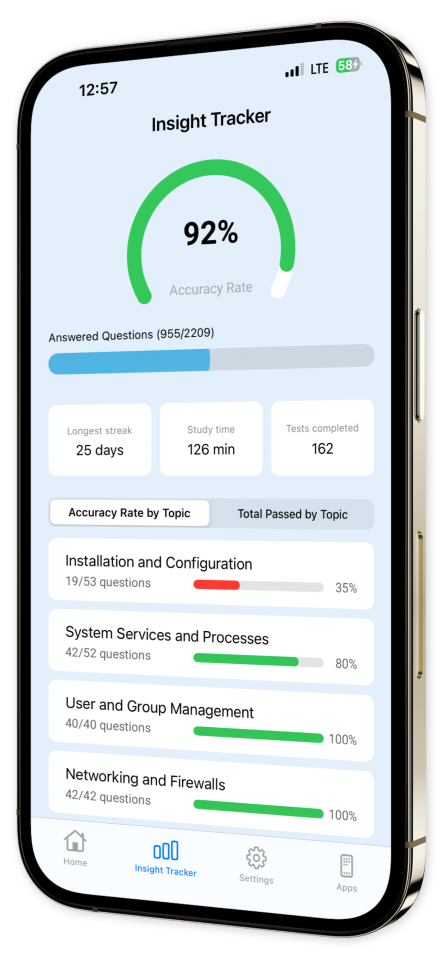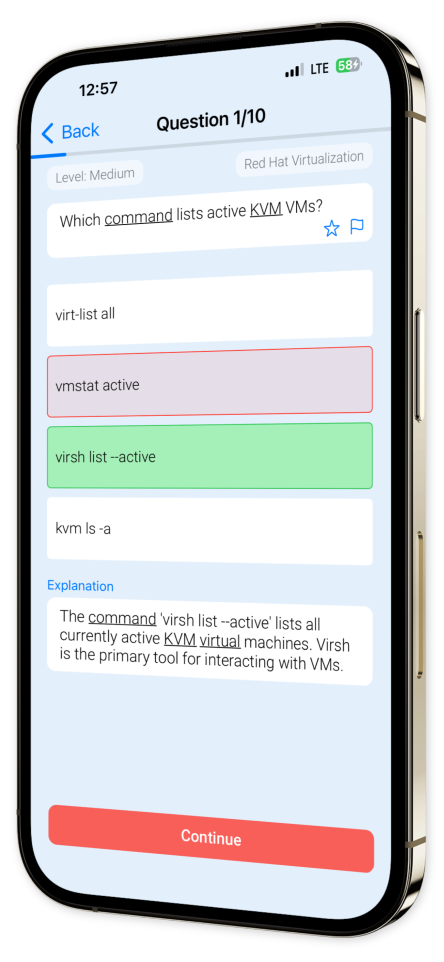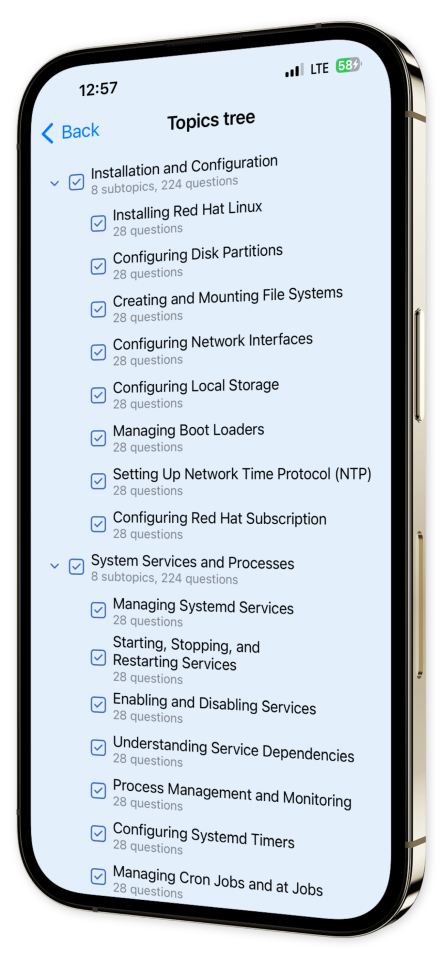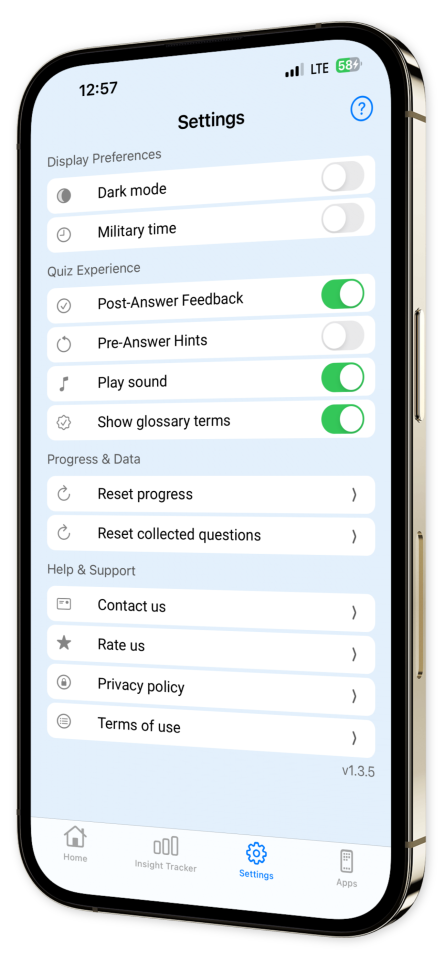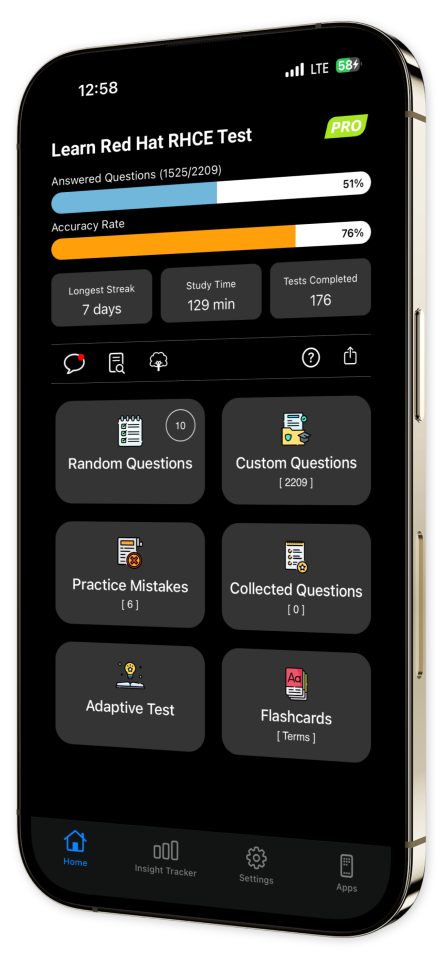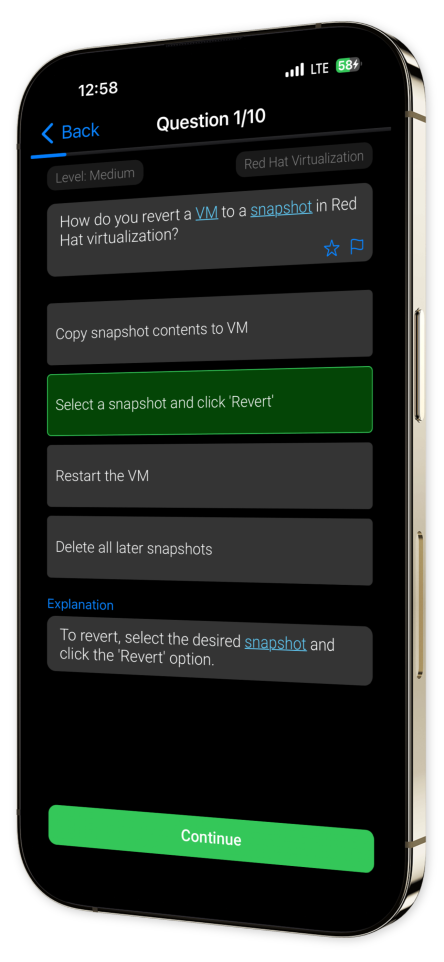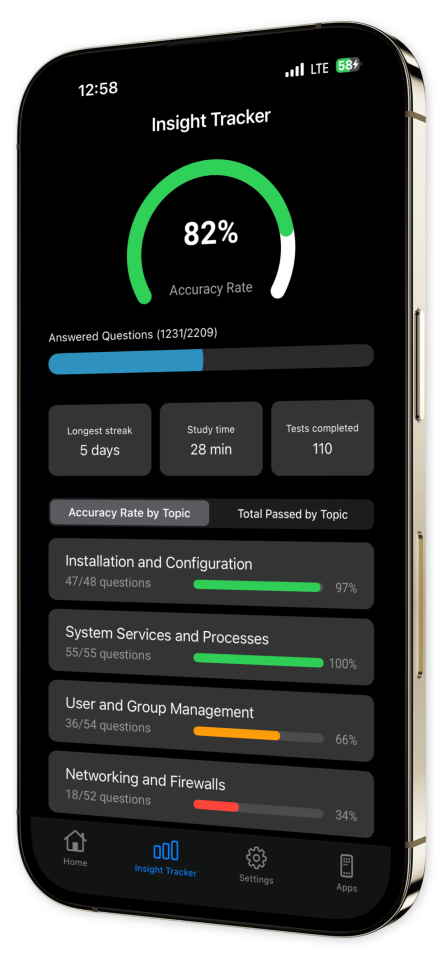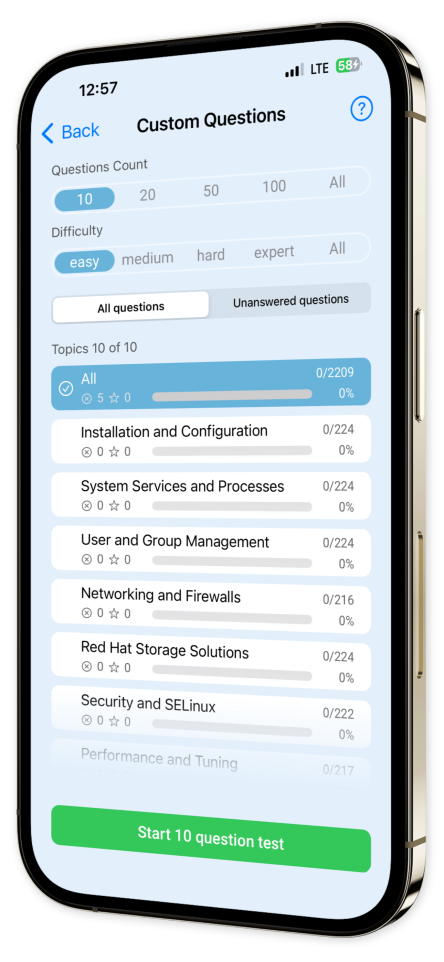
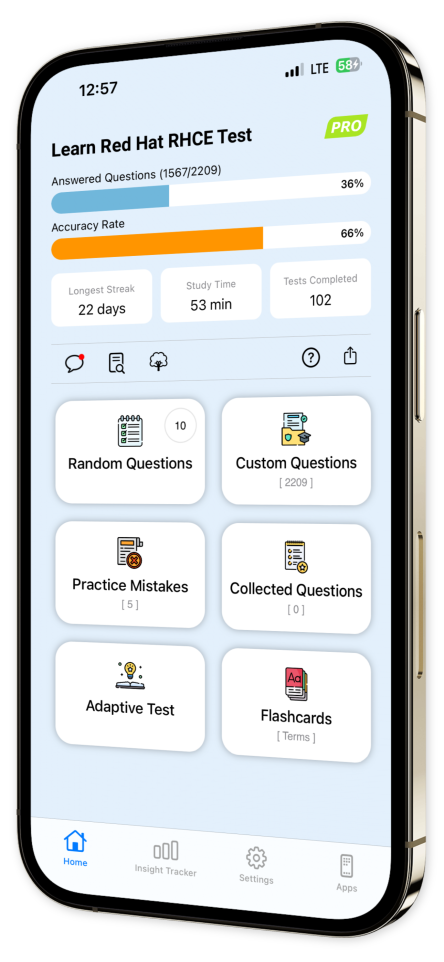
Learn Red Hat RHCE Test iOS
Master your Red Hat RHCE exam preparation with Learn Red Hat RHCE Test!
Our app is meticulously crafted to provide you with a rigorous and immersive test environment, featuring a plethora of practice questions that cover every essential aspect required for the Red Hat Certified Engineer certification.
Each question is complemented by an exhaustive explanation, designed to deepen your technical understanding and refine your skills.
Key Features:
*Extensive Question Bank*: Dive into an extensive collection of practice questions spanning key Red Hat RHCE topics, ensuring a well-rounded and thorough preparation.
*In-Depth Explanations*: Delve into the why and how of each question with our comprehensive rationales, enhancing both learning and knowledge retention.
*Custom Test Creation*: Tailor-make your own quizzes by choosing specific topics and question types, providing focused practice where you need it most.
*Progress Tracking*: Monitor your advancements and pinpoint areas of improvement with our user-friendly progress tracking tools.
*Offline Access*: Stay connected to your studies without needing to be connected - perfect for preparation on the go.
*User-Friendly Interface*: Experience a seamless and intuitive app design, keeping your attention on mastering the material without unnecessary distractions.
Download Learn Red Hat RHCE Test today and empower your journey towards Red Hat certification with an app that transforms study sessions into smarter learning experiences.
Enhance your preparation strategy now with Learn Red Hat RHCE Test, your ultimate resource for achieving Red Hat expertise!
Take the first step towards success—download now and unlock the path to becoming a certified expert!
Content Overview
Explore a variety of topics covered in the app.
Example questions
Let's look at some sample questions
What is the primary Red Hat package manager used during installation?
yumaptdpkgrpm
yum is the package manager mainly used in Red Hat-based systems to manage installations and updates.
What command is used to check available disk space before installing Red Hat Linux?
lsblkdf -hdublkid
The 'df -h' command displays available disk space in a human-readable format, helping verify sufficient space before installation.
What is the recommended filesystem for databases on Red Hat Linux for best performance and reliability?
ext4xfsbtrfsvfat
XFS is recommended for databases on Red Hat due to its performance, scalability, and reliability compared to ext4 or other filesystems.
When installing Red Hat Linux, which tool is utilized for partitioning and logical layout of storage space?
gdiskpartedLVMgparted
LVM (Logical Volume Manager) is designed for partitioning and managing disk space to allow flexible disk allocation.
Which Kickstart command specifies the package groups to be installed on Red Hat Linux?
%packages%include%post%pre
%packages command in kickstart files specifies what package groups or individual packages should be installed during the Linux installation.
For improving IOPS, which RAID level should be chosen when configuring a disk for RHEL server storage?
RAID 0RAID 1RAID 5RAID 6
RAID 0 provides high IOPS as it stripes data across multiple disks but lacks redundancy.
Which command creates a new ext4 file system on /dev/sdb1?
mkfs.ext4 /dev/sdb1mkfs.ext3 /dev/sdb1mke2fs -t ext2 /dev/sdb1mkfs.xfs /dev/sdb1
The command 'mkfs.ext4 /dev/sdb1' creates an ext4 file system. Other options specify incorrect file system types.
Which tool can activate a network interface in Red Hat?
ifupactivate-netstart-networknet-enable
'ifup' is used to bring a network interface up in Red Hat systems.
Which keyword in ifcfg file specifies interface name?
HWADDRDEVICEUUIDTYPE
The 'DEVICE' keyword in the ifcfg file defines the name of the network interface, such as eth0, wlan0, etc.
Which file contains persistent network interface configurations in Red Hat systems?
/etc/sysconfig/network-scripts/ifcfg-
Configuration files are stored in /etc/sysconfig/network-scripts/ifcfg-


